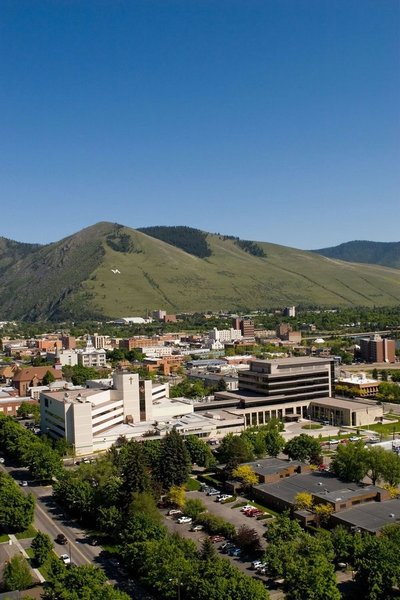August 9, 2006
Medical students will be able to spend entire third-year of medical school in Montana
The Montana WWAMI medical education program today announced that Billings and Missoula will be home to an expanded effort to train new physicians for Montana. Students enrolled in the University of Washington (UW) medical school will have the option of taking all their required third-year clinical training in one of these two cities.
The medical students will be participating in the Montana Track of the WWAMI Program of regionalized medical education. WWAMI is an acronym for the states of Washington, Wyoming, Alaska, Montana, and Idaho. The WWAMI Program was created in the 1970s to increase medical education opportunities for students from the five states and to train them for practices in areas of need in the region. Students take their first-year of medical school at a designated public university in their home state. Montana State University in Bozeman is the first-year site for Montana medical students. All students take their second year at the UW in Seattle, and their third and fourth years learning to care for patients in hospitals, clinics, and doctors’ offices around the region.
The Montana Track builds on this model. The difference is that students will be able to return to Montana to take all of their required third-year clerkships: family medicine, internal medicine, obstetrics/gynecology, pediatrics, and psychiatry, and surgery. All six clerkships will be offered in both Missoula and Billings. The internal medicine clerkship has already been taught in Missoula and Billings for many years, and the clerkship in obstetrics/gynecology is offered in both cities. Clerkships in family medicine will continue to be offered in Havre and Whitefish, and the pediatrics clerkship will continue in Great Falls.
Plans are under way to offer fourth-year clerkships in neurology, emergency medicine, and chronic care and rehabilitation. The Montana Track will officially start in 2008, although medical students may be taking newly established clerkships in Missoula and Billings as early as 2007.
Dr. Linda Hyman, director of the first-year WWAMI program at MSU and vice provost for health sciences, said that the medical students have a great interest in the Montana Track.
“This is an exiting opportunity for them,” Hyman said, “Many of our students already have expressed an interest in returning to Montana for their third year of medical school.
WWAMI is recognized as one of the nation’s top models for training primary-care physicians for rural and other medically underserved areas. Since the inception of WWAMI in the 1970s, the population of Montana has increased 30 percent, but the number of Montana WWAMI students has not increased. A proposal will go before the Montana legislature to increase the yearly admission of Montana students to the UW medical school from 20 to 30.
“Given that nearly two-thirds of the state’s population lives in non-metropolitan areas, Montana particularly sees a need for rural physicians and for primary-care doctors, such as family physicians, general adult medicine physicians, and pediatricians,” said Dr. John B. Coombs, UW associate vice president for clinical systems and community relations, and vice dean for regional affairs, rural health, and graduate medical education.
“We want the Montana WWAMI program to be innovative in realizing new possibilities in medical education, and in meeting the physician workforce needs our state,” said family physician Dr. Jay Erickson, UW School of Medicine assistant dean for clinical education in Montana and coordinator of the Whitefish family medicine clerkship. “The Montana Track was created because students who spend more time in the state have more ties to the state and are more likely to return to practice.”
“Local physicians, major hospital systems, community leadership, and universities in Missoula and Billings have been supportive of the Montana Track,” Erickson added. “The local medical staffs are interested in teaching medical students and in being involved in the WWAMI Program.”
Dr. Tom Norris, vice dean for academic affairs at the UW medical school, noted that a team of site visitors have already evaluated the new clerkship sites and preceptors. Clinical faculty will be appointed from the local physicians, and then the sites will undergo final approval.
Boise, Idaho, and Anchorage, Alaska, are the location of the Idaho Track and the Alaska Track, respectively, and Spokane has an Eastern Washington Track.
Future efforts to train physicians for Montana may include an intense study of the potential for additional residency training, also known as graduate medical education, to provide advanced clinical experience to recent medical school graduates. At present, Montana has one such program, a family medicine residency in Billings.
# # #



